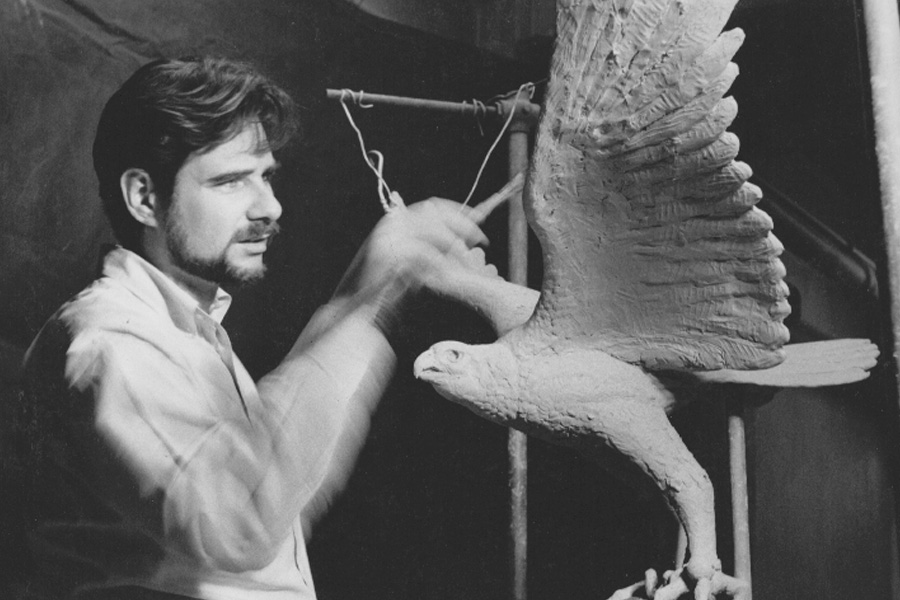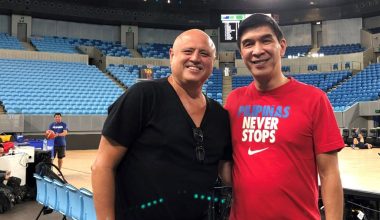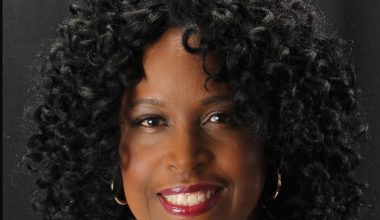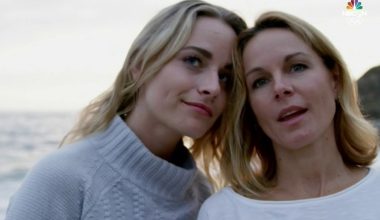Basic Information
| Field | Details |
|---|---|
| Name | Joel Rudnick |
| Born | June 27, 1936 |
| Died | June 22, 2025 (age 88) |
| Occupation | Painter, Sculptor |
| Training | Art Students League of New York; Brooklyn Museum Art School (studied with David Levine); National Academy of Design (sculpture) |
| Known For | Impressionistic Berkshires landscapes; figurative nude sculpture; re-modeling the falcon in Central Park’s The Falconer |
| Primary Regions | New York City; The Berkshires, Massachusetts |
| Spouse | Belita Moreno |
| Children | Two (including son Matthew Seth) |
| Selected Awards | Allied Artists of America Lindsay Morris Award; National Sculpture Society prizes; Elizabeth Greenshields grant |
| Active Years | Late 1950s–2025 |
| Online Presence | Artist Facebook page; Instagram @joelrudnick |
Biography and Early Training
Joel Rudnick came of age in the mid-20th century art world, absorbing the muscular realism of New York training while keeping one eye fixed on the living landscape. By his early twenties he was studying painting at the Art Students League of New York, developing a disciplined hand and a keen sense of value and edge. He honed his draftsmanship under the influence of David Levine at the Brooklyn Museum Art School, where education meant relentless looking—line first, then weight, then breath. Sculpture followed at the National Academy of Design, giving Rudnick a second language in which to think: mass, turn, silhouette.
By the early 1960s he was moving between painting and clay with uncommon ease. The city provided structure; the hills provided air. He would eventually settle into the Berkshires, returning frequently to New York’s artistic circles, but finding his daily subjects in the shifting light of western Massachusetts—the place that became his lifelong studio.
Artistic Voice and Signature Works
Rudnick’s painting language is impressionistic without being loose. He favored landscapes that feel lived-in: wind-scumbled fields, the humid blues of tree lines after rain, sunlit crests that move like a tide across pasture and hill. His brushwork is clear and often quick, but never careless; you can sense him measuring color notes like a pianist striking chords.
As a sculptor, he gravitated to the human figure—nudes and intimate studies that explore the architecture of gesture. The work is tactile and attentive to gravity: rib cages gently torque; shoulders carry their own hush. His pieces rarely shout. They breathe.
One public milestone stands apart: Rudnick re-modeled the falcon element as part of the restoration for Central Park’s The Falconer, the iconic 19th-century bronze. This contribution, undertaken in the latter half of the 20th century, underscores a core aspect of Rudnick’s practice: respect for tradition married to a working artist’s pragmatism. He understood the old forms well enough to converse with them—and to repair them.
Exhibitions, Awards, and Milestones
Rudnick’s exhibition history stretches across decades of gallery shows in New York and the Berkshires, with long-standing regional representation. He showed frequently among figurative and landscape painters’ circles, as well as mixed exhibitions featuring sculptors committed to classical craft with contemporary sensibilities.
His honors reflect both disciplines:
- Elizabeth Greenshields grant early in his career, providing crucial support to develop his craft.
- Prizes from the National Sculpture Society recognizing his fluency in form and anatomically informed sensitivity.
- The Lindsay Morris Award from Allied Artists of America, highlighting his painterly achievements.
Selected highlights by decade:
- 1960s: Intensive study; early group shows; restoration work connected to The Falconer’s falcon re-modeling timeline.
- 1970s–1980s: Dual-track maturation—Berkshires landscapes and studio figure sculpture; early awards begin to accumulate.
- 1990s–2000s: Regional prominence; regular exhibitions; steady sales through gallery representation in the Berkshires.
- 2010s–2020s: Continued production, online presence expanding; retrospective storytelling about his life in art.
Selected Honors (overview)
| Year/Period | Honor/Recognition | Notes |
|---|---|---|
| Early career | Elizabeth Greenshields grant | Early-career support for figurative work |
| Various years | National Sculpture Society prizes | Multiple recognitions for figurative sculpture |
| Various years | Allied Artists of America, Lindsay Morris Award | Painting award reflecting landscape strength |
Family and Relationships
Rudnick’s family life, while largely private, is part of the narrative of his steadiness and focus. Biographical accounts identify actress Belita Moreno as his spouse; the pair are publicly described as having been married for decades. Together they have two children. A birth notice records the arrival of their son, Matthew Seth, on August 7 of a past year; their other child’s details remain intentionally outside the spotlight.
The home front and the studio often overlapped for Rudnick. Friends and peers recall that family milestones punctuated the rhythms of his working life—a canvas drying during a school recital, a clay figure covered before dinner, the work always present yet never displacing the people around it. That balance reads in his art: the generosity of attention, the refusal to rush, the confidence that life and work can be quietly harmonized.
Note on namesakes: There are multiple individuals named Joel Rudnick in public life; this article concerns the painter-sculptor associated with New York training and a long career in the Berkshires.
Public Presence, Finances, and Community
Rudnick’s public profile is that of a working artist who earned recognition through exhibitions and awards rather than celebrity culture. His finances were not publicly disclosed, and there are no reliable net-worth figures attributed to him in general circulation. What is public is the scaffolding of a professional life: galleries, shows, juried awards, collectors who followed the work for decades.
He maintained an online footprint commensurate with a late-career artist adapting to the digital era: an artist Facebook page, an Instagram account sharing studio glimpses, finished paintings, and an occasional sculpture-in-progress. The tone was welcoming but focused on the art, not on personality. Posts were often seasonal—a green surge in June, the snow’s violet shadow in February—like field notes from the front lines of seeing.
Recent News and Legacy
In June 2025, Joel Rudnick died at age 88. The memorials that followed read like a chorus: students, gallery owners, fellow painters and sculptors recalling a generous critic, a steady mentor, a man who arrived at the workbench early and left late. The Berkshires community, which had long served as both subject and audience, answered with gratitude.
Around the time of his passing, a book project—Metamorphosis—emerged as a compendium of images and stories from his career. The timing suggests a deliberate act of summing up: a retrospective not just of pieces but of process, the kind of document that maps how an eye learns over many decades. It fits the arc of a maker who never stopped revising, studying, nudging color and contour toward truth.
Rudnick’s legacy rests in the work itself: landscapes that keep the taste of wind, and figures that carry the mind’s warmth as much as the body’s weight. He was a bridge between rigorous schooling and living observation, between the academy and the hillside. In his best pieces you can feel both—the clean, confident stroke and the flicker of momentary light—meeting midair like two swallows over a field.
FAQ
Who was Joel Rudnick?
Joel Rudnick (1936–2025) was an American painter and sculptor known for Berkshires landscapes and figurative sculpture.
What kind of art did he create?
He painted impressionistic landscapes and created figurative sculptures, often nude studies with an emphasis on gesture and form.
Where did he study art?
He trained at the Art Students League of New York, studied with David Levine at the Brooklyn Museum Art School, and learned sculpture at the National Academy of Design.
What is his connection to Central Park’s The Falconer?
He re-modeled the falcon element for restoration work associated with the monument, contributing to the sculpture’s renewal.
Was he married?
Public biographies identify actress Belita Moreno as his spouse, and they are noted to have been married for many years.
Did he have children?
Yes, two children; a son named Matthew Seth is publicly mentioned in a birth notice.
Did he receive major awards?
He received an Elizabeth Greenshields grant, prizes from the National Sculpture Society, and the Lindsay Morris Award from Allied Artists of America.
Where did he live and work?
He trained and exhibited in New York and lived and worked for many years in the Berkshires, Massachusetts.
Is his net worth publicly known?
No; financial details were not publicly disclosed, and his visibility centered on exhibitions and awards.
How is his legacy being preserved?
Memorials, a late-career book project titled Metamorphosis, and continued interest in his paintings and sculptures sustain his legacy.



